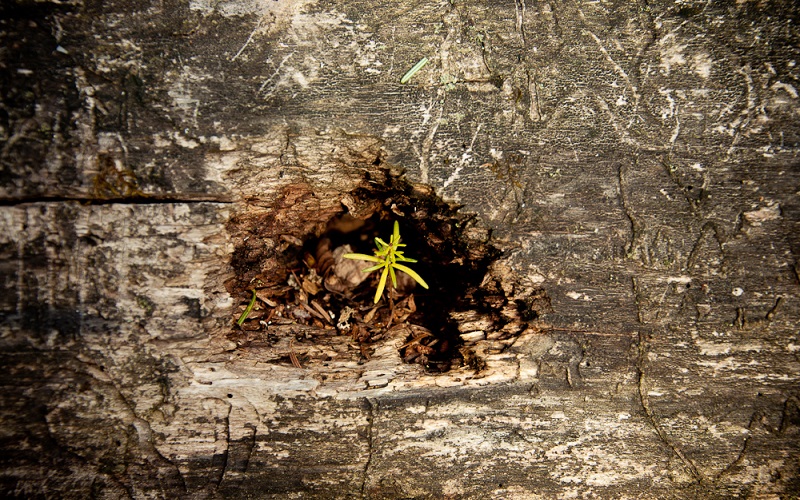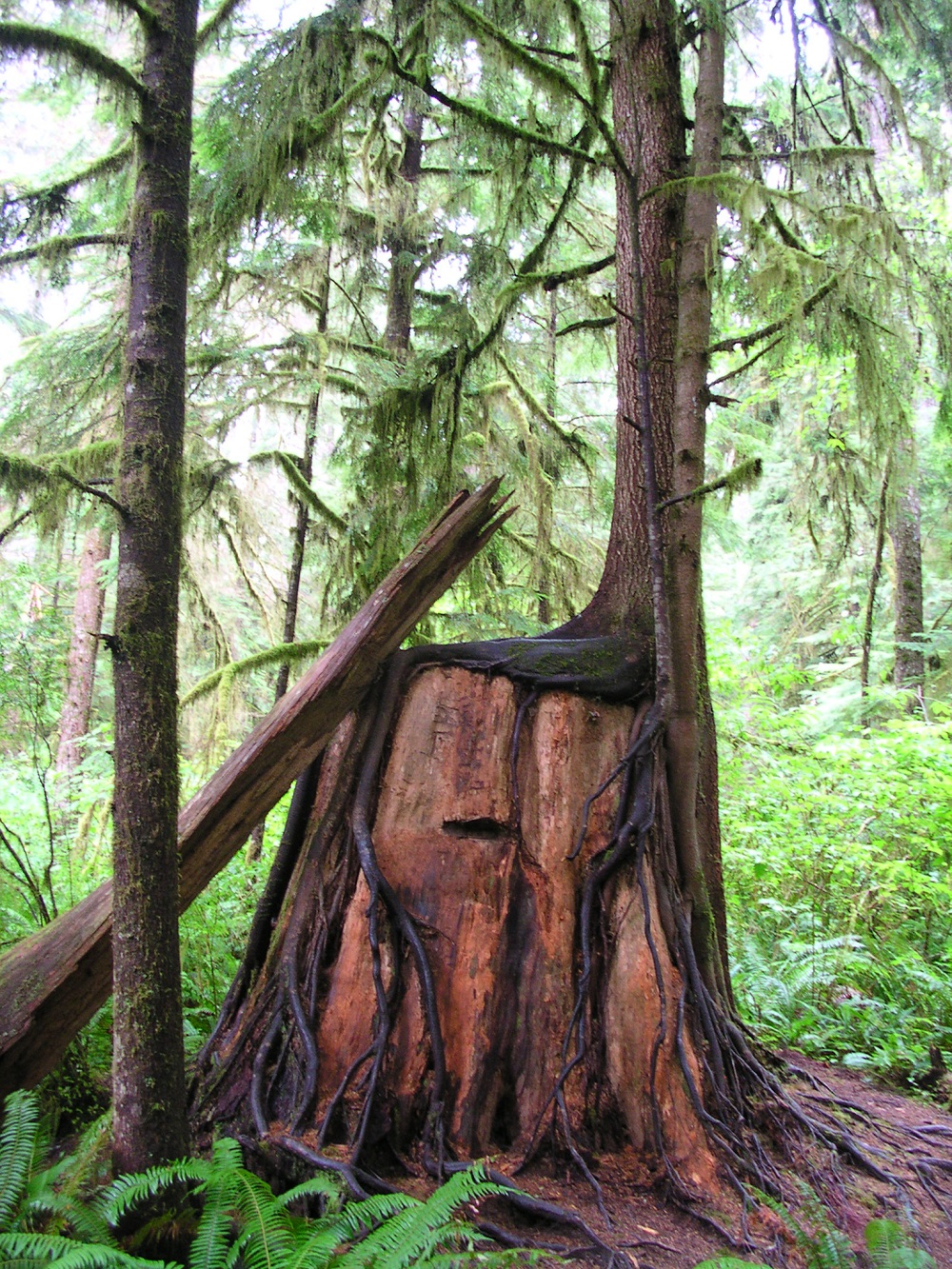By Allie Wisniewski, American Forests
Even though they’re dead, they are not gone — trees find a way to help each other out postmortem. Introducing the nurse log. Defined as fallen trees that provide “ecological facilitation” as they decay, nurse logs offer seedlings shade, nutrients, water and protection from disease and pathogens, thus nurturing and making way for the new generation.
How does it work, you ask? Well, the process begins with a fallen tree’s gradual breakdown of lignin following its death. Lignin is a group of polymers that help form the trees’ structural tissues, especially in wood and bark. Biodegradation of lignin is facilitated by microorganisms such as fungi and bacteria — white rot fungi, more specifically, is responsible for breaking down wood on the forest floor.
As the lignin deteriorates, holes and niches in the bark begin to grow in size and, over time, become filled with soil, moss, mushrooms and small plants. This dark soil is called humus, the nitrogen-rich organic matter that forms when plant and animal matter decay. When moss covers the exterior of the log itself, the decaying process is expedited, and new plant species are more easily supported.
Plants aren’t the only ones that benefit, however. Many small animal species such as squirrels are also known to roost on or in nurse logs, enriching the humus and providing additional fertilization for germinating seeds and sprouts with their food debris and feces.




The nurse log phenomenon is particularly visible in the northwest region of America, where Sitka spruces, hemlocks and Douglas-firs grow in abundance. As seedlings germinated on the nurse logs begin to sprout, their roots thicken as they creep down the log to the soil below. Simultaneously, fungi feast on the decaying tree, leading to the gradual rot of the nurse log that provides even more nutrient-rich sustenance for the young plants. It often takes several decades for a nurse log to decay completely, at which time the seedlings’ roots have become strong and thick enough to support themselves. And there you have it — another cycle begins!
Not a bad system, huh? Deep in the forest, there is always life after death. Nature truly does seem to have it all figured out.